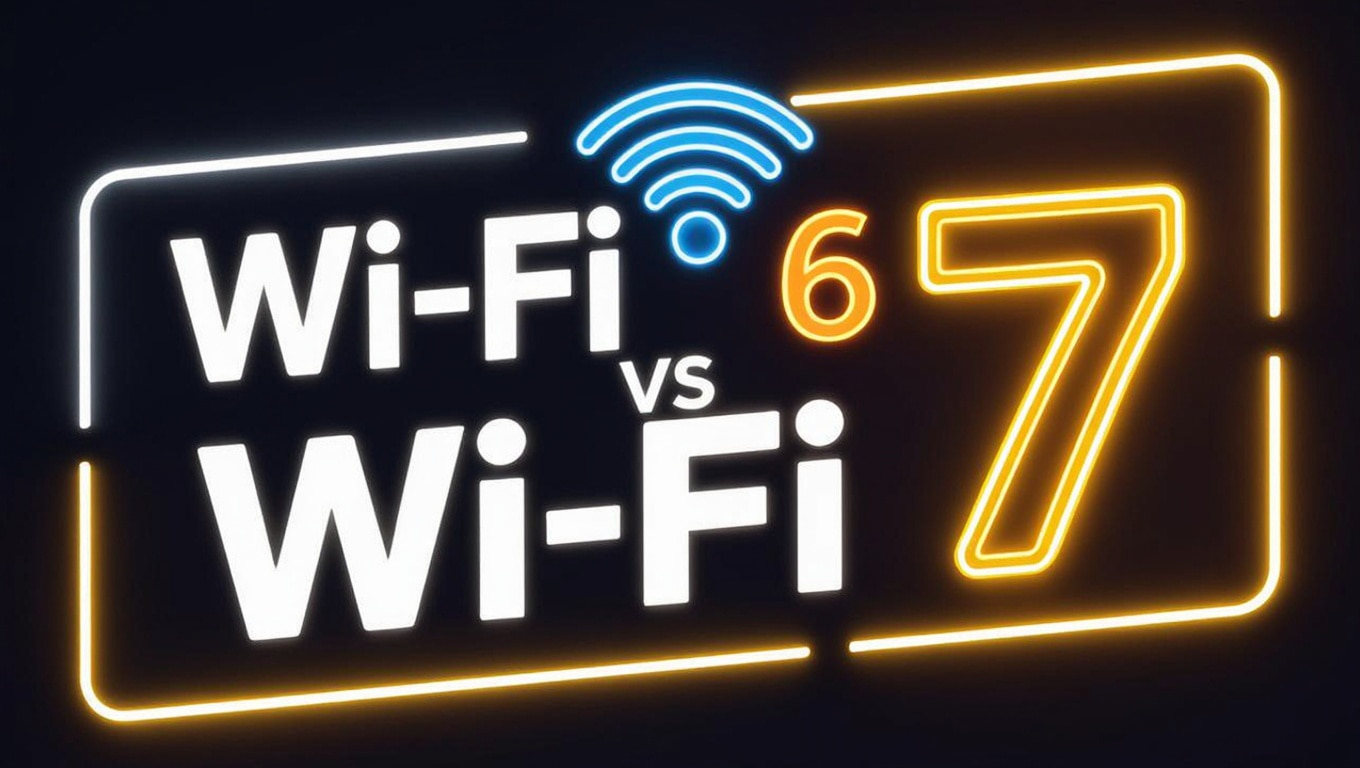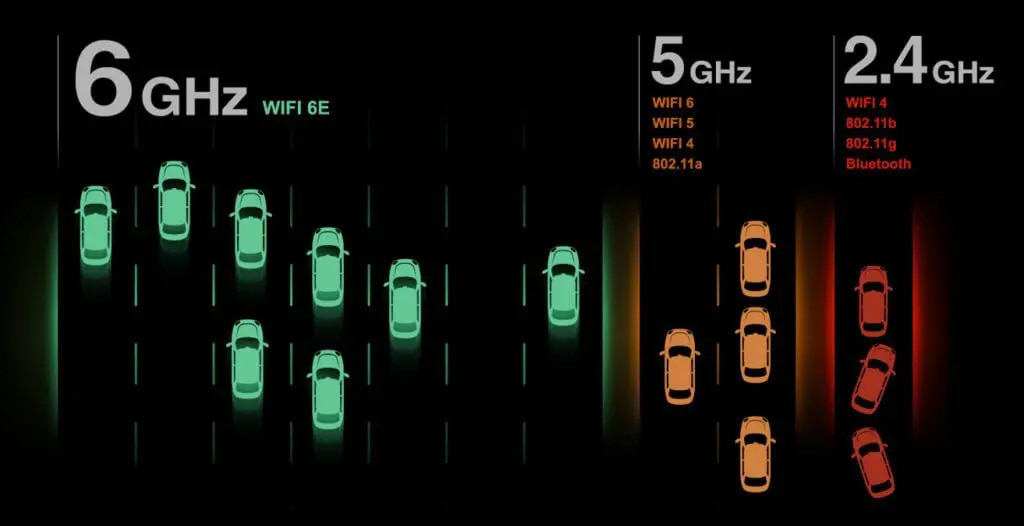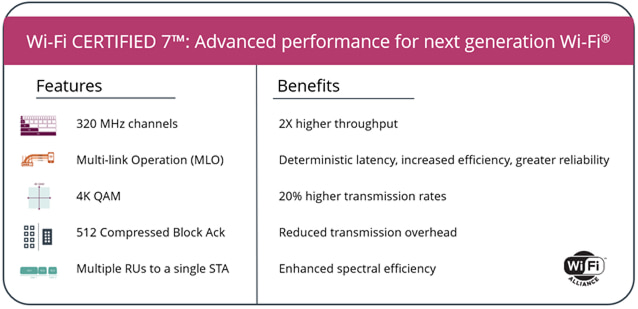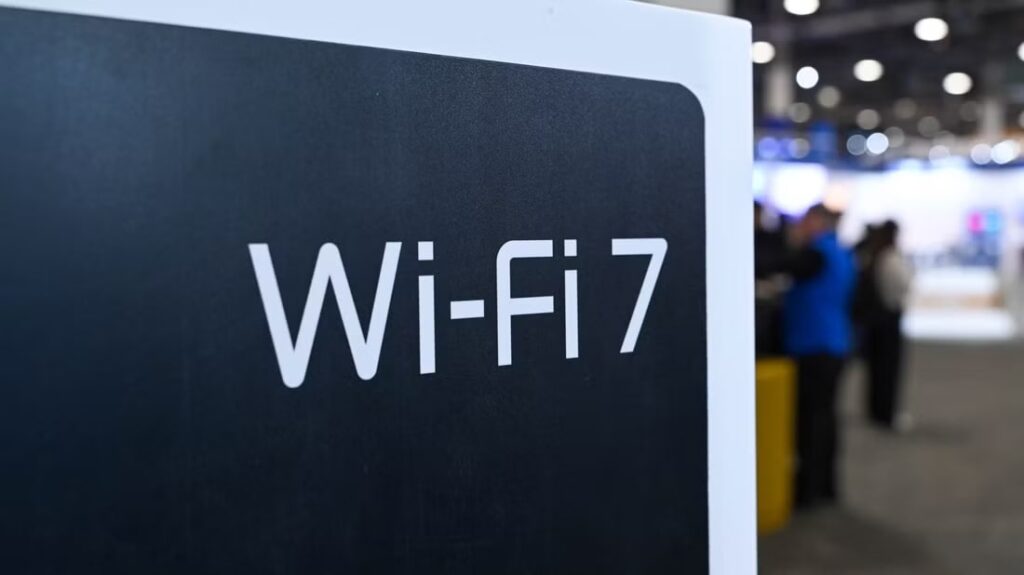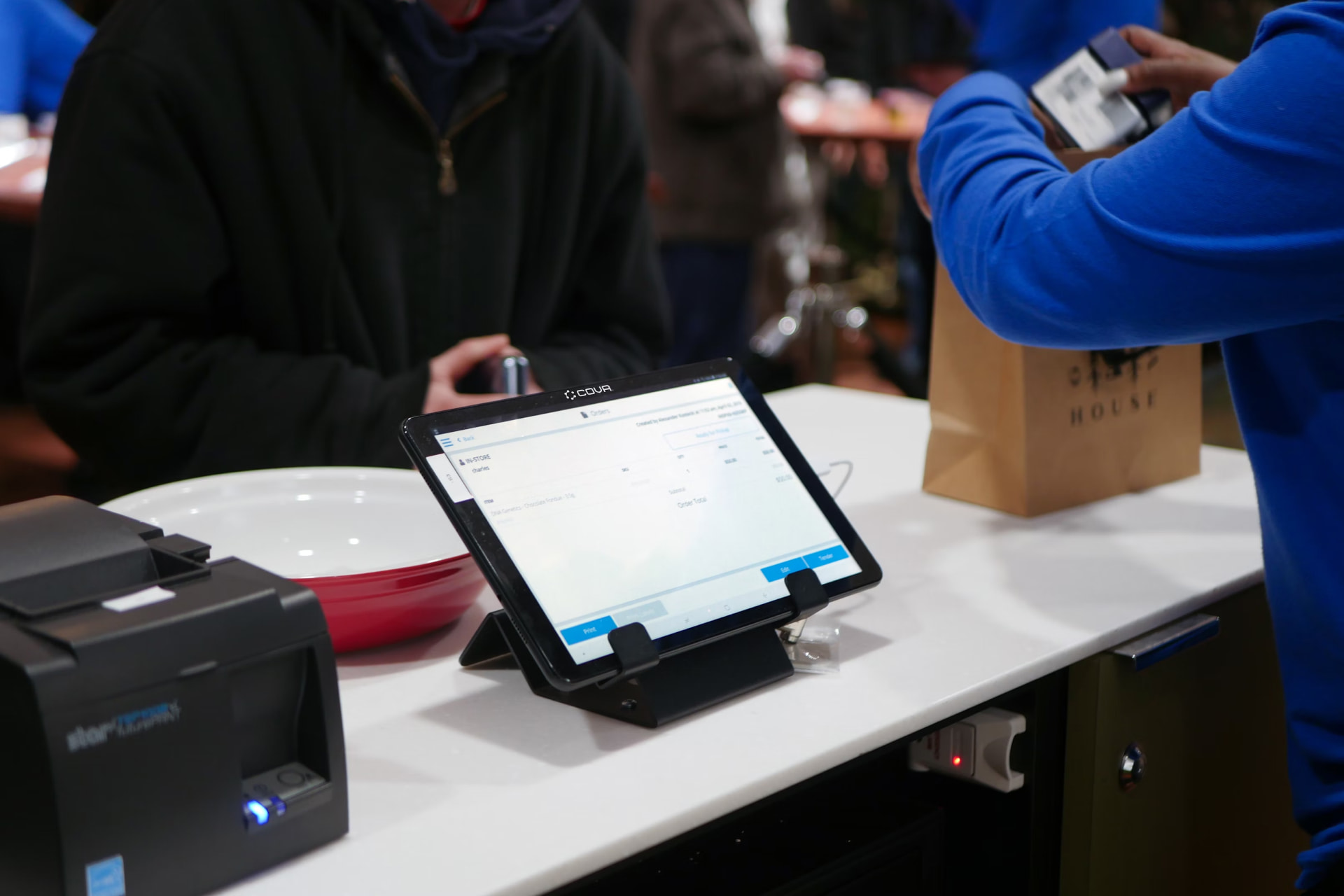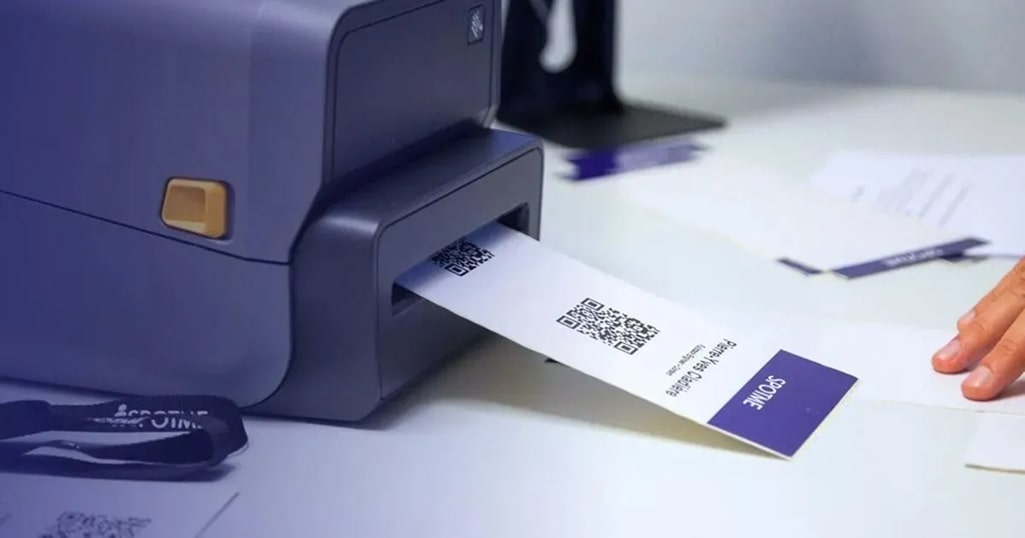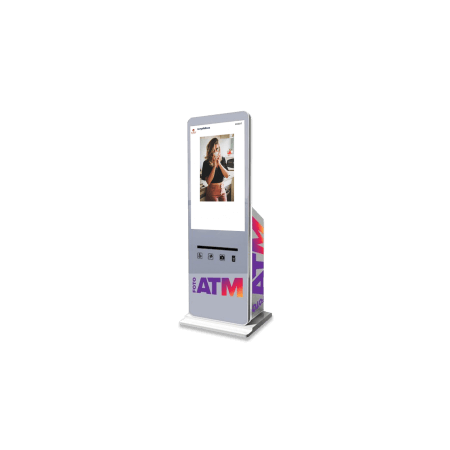Setting up a temporary office, running a training session, exhibiting at a trade show or launching a pop-up retail space in Australia comes with its own set of challenges. One of the most critical, yet often overlooked, is reliable high-performance wireless connectivity.
Each year new Wi-Fi technology advancements, like Wi-Fi 6E and Wi-Fi 7, impact decision making for temporary setups as businesses need to consider the latest standards and their benefits.
Naturally, the conversation is all about the latest standards: Wi-Fi 6E and Wi-Fi 7. But when you’re hiring equipment for a specific short term period the decision isn’t just about the latest tech. It’s about choosing the right tech for the job, ensuring compatibility, reliability and cost effectiveness.
As Australia’s leading IT and AV rental specialists we guide businesses through this decision every day. This article breaks down the key differences between Wi-Fi 6E and Wi-Fi 7, specifically for temporary network hire. We’ll help you understand which standard is best for your temporary network needs.
Introducing the Wi-Fi 6E and Wi-Fi 7 Standard
Wi-Fi 6E and Wi-Fi 7 are the latest advancements in wireless networking technology, bringing faster speeds, improved performance and increased capacity. Wi-Fi 6E extends Wi-Fi 6 by adding the 6 GHz band to the existing 2.4 GHz and 5 GHz bands, creating a new frequency band that reduces congestion and interference. This allows for more efficient data transfer, perfect for environments with multiple devices connected at the same time.
Wi-Fi 7 builds on these improvements, offering even faster speeds and better efficiency. It allows for data to be sent and received across multiple bands at the same time, perfect for applications that require low latency and high speed data transfer.
Whether it’s streaming, gaming or virtual reality, Wi-Fi 6E and Wi-Fi 7 are both great solutions for new-age, high demand applications, providing less interference for a seamless and reliable connection.
Key Points to Consider for Wi-Fi Network Hire
Before we compare the standards let’s acknowledge why temporary Wi-Fi needs are different from permanent installations:
- Density: Events and trade shows have high concentration of users and devices in a small area, requires robust congestion management.
- Reliability: Downtime isn’t an option for a short term project or event. The hired network must work seamlessly.
- Device Diversity: You have less control over the types of devices connecting (attendees’ phones, various rented laptops), so broad compatibility is key.
- Specific Duration: Unlike permanent installations you need peak performance for a defined period, so “future proofing” is less important than immediate suitability.
- Rapid Deployment: Equipment needs to be easy to set up, configure and support quickly.
Hybrid work models and IoT devices can push network capabilities to the limit, so a robust Wi-Fi solution like Wi-Fi 6E is needed to handle these demanding environments.
Keep these unique requirements in mind when comparing Wi-Fi 6E and Wi-Fi 7 for your next hire.
Wi-Fi 6E (802.11ax): The Proven High-Performer for Hire with 6GHz Band
Wi-Fi 6E isn’t a new standard but an extension (the “E”) of Wi-Fi 6 (802.11ax). Its game changing feature was opening up the 6 GHz band access for Wi-Fi use, along with the traditional 2.4 GHz and 5 GHz bands.
Key Benefit for Rental:
The 6 GHz band is like a brand new, multi-lane highway with very little traffic. For temporary setups in potentially crowded environments (think exhibition halls buzzing with signals), this ensures better connection quality and reduces interference mitigation challenges compared to the often congested 2.4 GHz and 5 GHz bands.
This means a more stable, reliable connection for your hired network. The 6 GHz band also improves performance by allowing better device handling, although its higher frequency means a shorter range.
Performance:
Wi-Fi 6E offers throughput comparison gains over Wi-Fi 5 and early Wi-Fi 6, easily supporting gigabit speeds. It uses 1024-QAM and OFDMA (orthogonal frequency division multiple access) for efficiency. Wi-Fi 6E supports the same maximum speed of 9.6 Gbps as Wi-Fi 6, ensuring high-speed connectivity for demanding applications.
While it supports 160 MHz channels, the 6 GHz band provides more non-overlapping channels, so better performance in dense areas. Wi-Fi 6E uses different frequencies to reduce interference and allow wider channels, which is great in crowded areas.
Maturity & Compatibility:
This is key for rental. Wi-Fi 6E technology is mature. More importantly, client device support (laptops, modern smartphones, tablets) for the Wi-Fi 6e standard is widespread today. When hiring for an event or temporary office where you have diverse or unknown devices connecting, this broad compatibility is a big win.
Rental Verdict:
Wi-Fi 6E is the sweet spot for most temporary hire scenarios in Australia. It delivers great performance, uses the less crowded 6 GHz band for reliability and crucially, works with a wide range of devices your team or attendees are likely using right now. It’s a reliable, high-performance workhorse.
Wi-Fi 7 (802.11be): The Future, But is it Ready for Hire Today?
Wi-Fi 7, based on the ieee 802.11be standard, is the next generation of wireless network tech, promising “Extremely High Throughput” (EHT) and more. It also operates across the 2.4 GHz, 5 GHz and 6 GHz band access, to enhance device performance by using all three bands simultaneously. Key features:
- 320 MHz Channels: Wi-Fi 7 doubles the maximum channel width to 320 mhz channels (in the 6 GHz band), so much higher data rates per device. Think doubling the width of that highway lane again.
- 4K-QAM (Quadrature Amplitude Modulation): Wi-Fi 7 introduces 4k-qam, a more advanced modulation technique than Wi-Fi 6E’s 1024-QAM. This allows packing more data into the same signal (around 20% higher theoretical rates), so more peak speed difference. Wi-Fi 7 utilises 4096-QAM to encode data, which is an increase from Wi-Fi 6E’s 1024-QAM, enabling even greater data density and efficiency.
- Multi-Link Operation (MLO): Perhaps the most talked about feature, MLO allows a device to connect and aggregate data across multiple bands (e.g., 5 GHz and 6 GHz) and channels at the same time. This means throughput comparison, latency reduction and better reliability by having redundant paths. Wi-Fi 7 also adds more bandwidth and better frequency management to reduce latency and optimise network performance.
- Preamble Puncturing / Multi-RU: New techniques (preamble puncturing, multi-ru) allow Wi-Fi 7 to be more flexible in using available spectrum, carve out interference and assign resource units (RUs) more efficiently. MLO and wider channels are designed to deliver better performance, but practical applications will vary based on device support.
Wi-Fi 6E vs Wi-Fi 7 for Your Temporary Network Hire with Connected Devices
Let’s summarise the comparison with a focus on the rental decision:
- The Device Bottleneck: The biggest hurdle for Wi-Fi 7 in rental scenarios is client device support. To benefit from 320 MHz channels, 4K-QAM or MLO, the connecting laptops, phones or tablets must also support Wi-Fi 7. As of early 2025, Wi-Fi 7 device penetration is still low, especially compared to Wi-Fi 6E. Hiring a state-of-the-art Wi-Fi 7 network may result in most devices connecting at Wi-Fi 6E speeds anyway. Wi-Fi 6E can reach up to 9.6 Gbps, while Wi-Fi 7 is expected to achieve 46 Gbps, a significant difference in theoretical maximum speeds.
- MLO Reality: While MLO sounds great, its real-world benefit in a temporary setting depends heavily on compatible clients. Without them, it offers no advantage over standard connections.
- Cost Implications: Newer technology often comes at a premium hire cost. Is the potential benefit worth the extra expense if most devices can’t leverage it?
- Need vs. Capability: Does your temporary application truly need the theoretical multi-gigabit speeds Wi-Fi 7 offers per device, or is the robust, gigabit-plus performance of Wi-Fi 6E sufficient and more practical? Wi-Fi 7 can achieve up to 46 Gbps for a single client, but such high speeds may not be fully utilised in everyday applications or by multiple users on a network.
- Rental Verdict: Wi-Fi 7 is the future-proofing network direction. It offers significant potential. But for most temporary hire needs in Australia right now, its key advantages are often theoretical due to the widespread lack of compatible client devices. It could be considered for highly specific, controlled environments where you know all connecting devices are Wi-Fi 7 capable (e.g., a specific tech demo), but for general use, it’s often overkill and underutilised.
| Feature | Wi-Fi 6E (IEEE 802.11ax) | Wi-Fi 7 (IEEE 802.11be) | Rental Consideration |
| Primary Bands | 2.4 GHz, 5 GHz, 6 GHz | 2.4 GHz, 5 GHz, 6 GHz | Both utilise the cleaner 6 GHz band, a major plus for temporary setups. |
| Max Channel Width | 160 MHz | 320 MHz | Wi-Fi 7 offers wider channels for potentially higher speeds, but requires Wi-Fi 7 client devices. Buying a Wi-Fi router is a strategic investment for upgrading home Wi-Fi infrastructure. |
| Max Modulation | 1024-QAM | 4K-QAM | Wi-Fi 7 packs more data, but requires Wi-Fi 7 client devices and optimal signal conditions. |
| Key Reliability Feature | Access to less congested 6 GHz band | Multi-Link Operation (MLO) | MLO could be more reliable, but again, requires Wi-Fi 7 client devices. 6E’s 6 GHz access provides significant reliability gains now. |
| Theoretical Max Speed | 9.6 Gbps | 46 Gbps | Theoretical speeds are rarely achieved. Focus on practical throughput relevant to your temporary needs. |
| Real-World Performance | Excellent, multi-gigabit capable, handles density well. | Potentially higher, but often limited by client capabilities. | 6E delivers fantastic real-world speeds suitable for almost all temporary business needs today. |
| Latency | Low | Potentially Lower | Wi-Fi 7 aims for low latency, important for AR / VR applications or gaming performance, but 6E latency is already very good for most business apps. |
| Device Compatibility | High (widespread) | Low (emerging) | This is often the deciding factor for temporary hire. 6E compatibility is far broader now. |
| Backward Compatibility | Yes (connects older devices at their standard speeds) | Yes (connects older devices, but security reqs may limit very old devices) | Both maintain backward compatibility, but ensure your essential legacy devices meet WPA3/WPA2 security if considering Wi-Fi 7. |
| Current Rental Sweet Spot | Often the optimal choice | Niche / future-focused | For balanced performance, compatibility, and cost-effectiveness in current temporary hires, 6E typically wins. A comprehensive update, including access points and devices, is necessary to fully benefit from Wi-Fi 7. |
Scenario-Based Recommendations for Hiring Wi-Fi
Based on common temporary requirements we see at Hire Intelligence:
Temporary Office / Project Site:
- Recommendation: Wi-Fi 6E.
- Reasoning: Provides reliable, fast connectivity for standard business laptops and devices. Handles typical office density well. Broad compatibility ensures rented or employee devices connect seamlessly. Cost-effective IT solutions are key here. New devices are essential for maximising the capabilities of Wi-Fi 7 technology.
Training Sessions / Workshops:
- Recommendation: Wi-Fi 6E.
- Reasoning: Ideal for deploying fleets of rented laptops. Ensures stable connections for online resources or collaboration tools. Handles multiple simultaneous users effectively. Think laptop hire for training.
Trade Shows & Exhibitions:
- Recommendation: Wi-Fi 6E (Strongly Recommended).
- Reasoning: High device density and potential for interference make the 6 GHz band invaluable. Crucially, broad client device support ensures attendees and exhibitors can connect reliably. Wi-Fi 7 might be justifiable only for a very specific, controlled product demo where all client devices are confirmed Wi-Fi 7 compatible, but this is rare.
Conferences & Events:
- Recommendation: Wi-Fi 6E.
- Reasoning: Similar to trade shows. Need to support a large volume and variety of attendee devices reliably. The proven performance and compatibility of 6E are paramount.
Mobile Point-of-Sale (POS) / Pop-Up Shops:
- Recommendation: Wi-Fi 6E.
- Reasoning: Transaction reliability is non-negotiable. Wi-Fi 6E offers stable, secure connectivity in potentially varied locations. Focus on proven tech over bleeding-edge for critical functions.
Make the Smart Choice On Hiring Wireless Networks
While Wi-Fi 7 offers a glimpse into the future with advanced features like MLO and wider 320 MHz channels, the practical reality for temporary network hire in Australia today makes Wi-Fi 6E the clear winner for most situations.
Why? Wi-Fi 6E provides significant performance boosts, utilises the less-congested 6 GHz spectrum for superior reliability in busy temporary settings (like events or project sites), and critically, boasts the widespread client device compatibility needed when dealing with diverse user hardware. It perfectly balances high performance, proven stability, and cost-effectiveness for your current temporary network needs.
Avoid getting caught up purely in the specifications race. Prioritise dependable, high-quality connectivity that meets your immediate requirements for various Wi-Fi applications . For businesses hiring IT for temporary projects or events across Australia, Wi-Fi 6E represents the most intelligent and practical investment right now.
Take the guesswork out of your temporary wireless networking. Contact the Hire Intelligence team today to discuss your requirements. We’ll help you choose the right technology (be it Wi-Fi 6E or, in specific cases, exploring Wi-Fi 7 as a tech path) and provide a tailored quote for all your business wireless networking rental needs.

